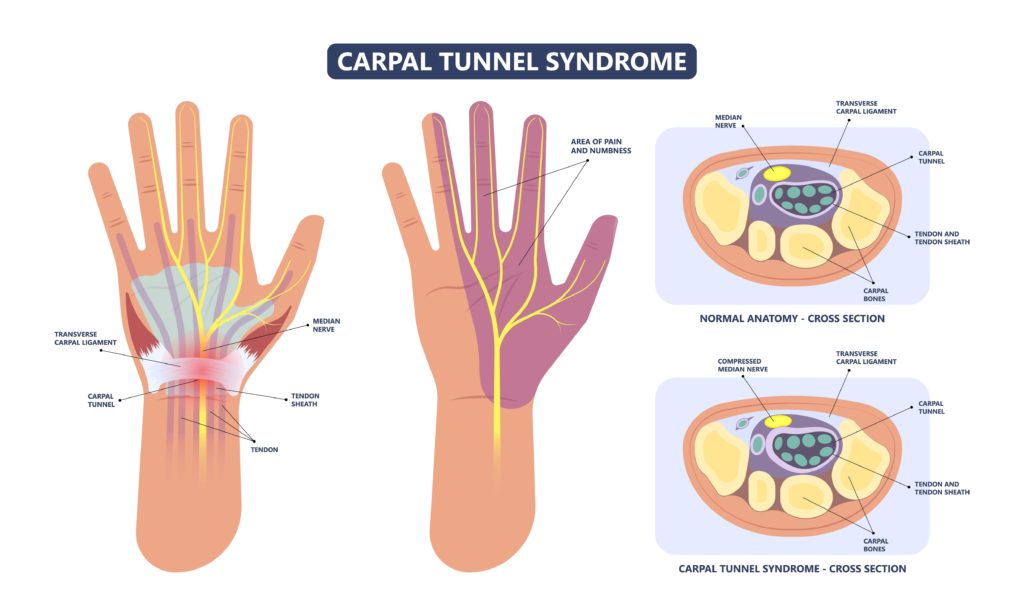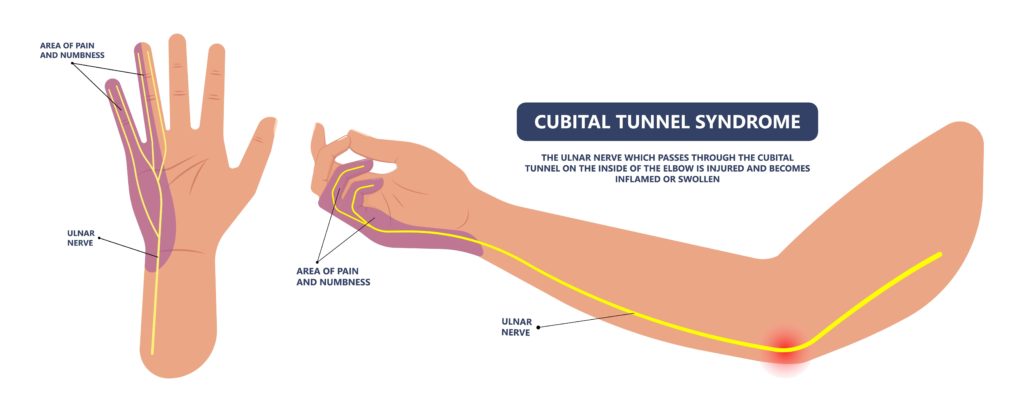The term ‘peripheral nerve disorders’ may sound obscure, but it actually happens to many of us. The nagging pain we feel after typing on our keyboards for prolonged periods is also known as carpal tunnel syndrome, which is a type of peripheral nerve disorder that has a lifetime risk of 10%.
Nerves are bundles of fibres that run throughout our bodies. Their primary function is to convey information from one part of the body to another via electrochemical impulses. There are three different types of nerves: sensory nerves, motor nerves, and autonomic nerves. These nerves are responsible for helping us feel various sensations such as heat, touch, and pressure, as well as allowing us to move.
Peripheral nerve disorders refer to nerve damage in the body’s extremities, such as your hands, feet and arms. This can result in pain or lack of sensation for touch, temperature and position sense, or motor weakness. This significantly affects the patient’s quality of life.
Peripheral nerve disorders can be a result of trauma, viral infections, metabolic disorders (e.g. diabetes or hypothyroidism) and genetics. Traumatic injuries or entrapment neuropathies and metabolic disorders are one of the most common causes for peripheral nerve disorders.
There are many types of peripheral nerve disorders, but the more common types of peripheral nerve disorders are:
Carpal tunnel syndrome is a type of peripheral nerve disorder whereby nerves in the carpal tunnel (which is a limited space) in the wrist are compressed. The median nerve then swells, causing irritation and pain in the fingers and forearm, particularly at night.
If the nerve becomes severely damaged, the patient may experience a lack of sensation in their thumb, index and middle fingers. Subsequently, they will be unable to use these fingers due to muscle weakness.
Carpal tunnel syndrome can be caused by repetitive compression of the nerve by using vibrating tools, crushing injuries at the wrist or inflammation of the ligaments in the carpal tunnel.


Also known as cubital tunnel syndrome, ulnar nerve entrapment is a condition where the ulnar nerve is located from the neck all the way down to the wrist. Ulnar nerve entrapment usually occurs on the inside of the elbow or at the wrist and is caused when there is prolonged stretching of the ulnar nerve.
This can be caused by placing direct and prolonged pressure on your elbows and wrists, such as leaning your elbows on a solid surface or leaning on your bike handlebars for long periods of time.
Symptoms of peripheral nerve disorders include:
You should see a doctor when you notice unusual tingling sensations, weakness or pain in your hands and feet. Remember that early diagnosis leads to early treatment and higher chances of managing your condition and preventing further damage.
There are several causes for peripheral nerve disorders. Some of these are:
You can expect your doctor to take a full medical history and a neurologic test that examines the following:
Your doctor may also order some tests to aid in their diagnosis. These tests may include blood tests, thyroid function tests, nerve biopsies, nerve conduction tests as well as electromyography.

Peripheral nerve disorders are typically diagnosed through a series of tests such as:
NCS can identify any damage to your nerves by measuring how quickly an electrical impulse moves through your nerves. Two electrode patches are pasted onto your skin during the test. One of the electrode patches stimulates the nerve by sending a mild electrical impulse while the other records it. This process repeats with every nerve that is being tested.
EMG helps to detect muscle abnormalities by measuring the muscles’ response or electrical activity in response to a nerve’s stimulation of the muscle. Small needles known as electrodes are poked through the skin into the muscles. Any electrical activity will be picked up and amplified. EMG will measure the electrical activities of muscles during rest, slight contractions and forceful contractions. As such, you may be asked to bend or lift your arm or leg during an EMG test. An EMG test is typically performed immediately after an NCS test.
Nerve biopsy involves removing a sample of nerve tissue to examine nerve fibre endings for damage.
Radioimaging such as MRI and CT scans can help to reveal any nerve compressions, herniated disks or vascular problems that may affect nerves.
There are a wide array of methods used to treat peripheral nerve disorders. Some of them include:
Medications
Medications such as nortriptyline and serotonin-norepinephrine reuptake inhibitors may be given to help ease the pain.
Open surgery
Open surgery is the more commonly used method and involves cutting a wider area in order to access the affected nerve. Open surgery usually results in longer recovery times and more pain as well.
Peripheral nerve disorders can cause unnecessary pain and can even disrupt the quality of life of the patient. It is important for us to recognise these signs and seek professional help prompt to avoid such symptoms from worsening.
Contact Us For More Information
Your needs are important to us.
For enquiries, leave a message and our friendly team will get in touch with you.
Monday – Friday: 9:00AM – 5:00PM
Saturday: 9:00AM – 12:30PM
Sunday & Public Holiday: Closed
We provide quality specialised care for neuro and spine conditions.
For enquiries, leave a message and our friendly team will get in touch with you.
Monday – Friday: 9:00AM – 5:00PM
Saturday: 9:00AM – 12:30PM
Sunday & Public Holiday: Closed
We provide quality specialised care for neuro and spine conditions.
For enquiries, leave a message and our friendly team will get in
touch with you.
Monday – Friday: 9AM – 1PM | 2PM – 5PM
Weekends & Public Holidays: CLOSED
© 2023 All Rights Reserved | Advanced Brain & Spine Surgical Centre | Terms & Conditions